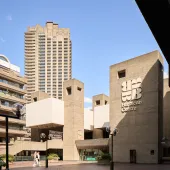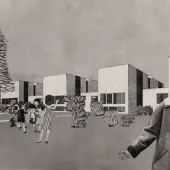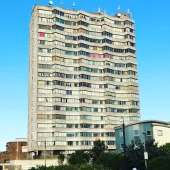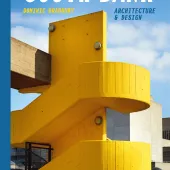Fresh call to list Southbank Centre as immunity nears expiry
The Twentieth Century Society (C20) has renewed its call to grant listed status to the Southbank Centre in London, as a long-standing immunity from listing is set to expire in February 2025. The complex, which includes the Hayward Gallery, Purcell Rooms and Queen Elizabeth Hall, is regarded as one of the most significant examples of British brutalist architecture.
Historic England has recommended listing the Southbank Centre on five occasions since 1991, but each time, the Secretary of State has rejected the proposal. If listed, the complex would join other modernist landmarks on the South Bank, including the Grade I-listed Royal Festival Hall and the Grade II*-listed National Theatre.
The current Certificate of Immunity from listing (COI), which prevents designation for a period of five years, was issued in 2020 and expires on 5 February 2025. The Southbank Centre has previously opposed listing and is expected to seek an extension to its immunity.
C20 director Catherine Croft said: “This is the building which often prompts the response: ‘I can’t believe it’s not listed.’ It is an internationally recognised brutalist masterpiece, long loved by aficionados and now increasingly understood and respected by the wider public.”
Designed by the London County Council Architects Department under Norman Engleback, the Southbank Centre buildings were opened in the late 1960s. Their bold use of exposed concrete contrasted sharply with the smooth modernism of the neighbouring Royal Festival Hall, and they were controversial from the outset. In 1967, Daily Mail readers voted the complex Britain’s ugliest building.
Over the decades, multiple redevelopment proposals have failed to materialise, including designs by Terry Farrell, Richard Rogers, and Rick Mather. In 2018, Feilden Clegg Bradley Studios led a major restoration of the buildings, supported by £16.7 million from Arts Council England.
Croft emphasised that listing would not prevent future maintenance or programming changes. “The prestige and recognition of listing would send out a positive message about our brutalist heritage more generally, and encourage the appreciation and sustainable reuse of other outstanding examples across the country,” she said.
Brutalist architecture, derived from the French term ‘béton brut’ (raw concrete), emerged in the post-war period and was associated with public and social housing projects. While often criticised for its austere aesthetic, the style has seen a resurgence in appreciation, with several high-profile brutalist buildings gaining protected status in recent years.
Historic England has stated that any recommendation regarding the Southbank Centre remains confidential until a decision is made by the Department for Culture, Media and Sport (DCMS). The ultimate decision will rest with heritage minister Chris Bryant.







